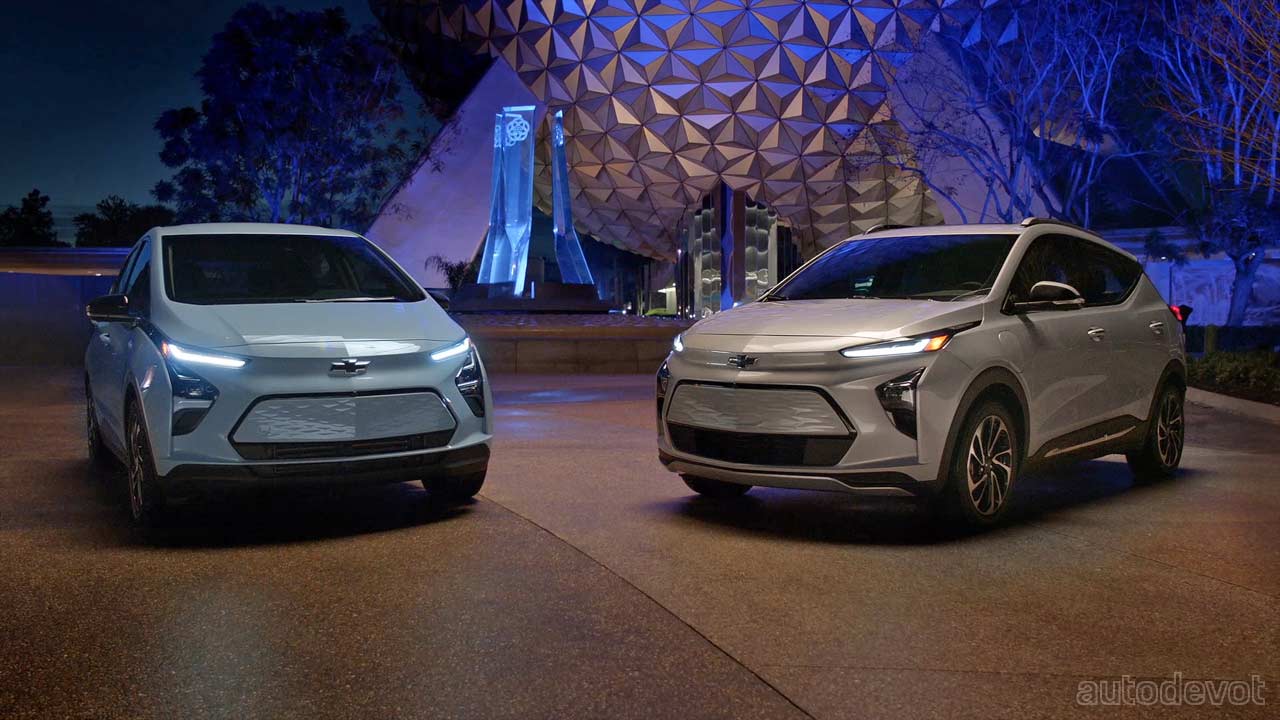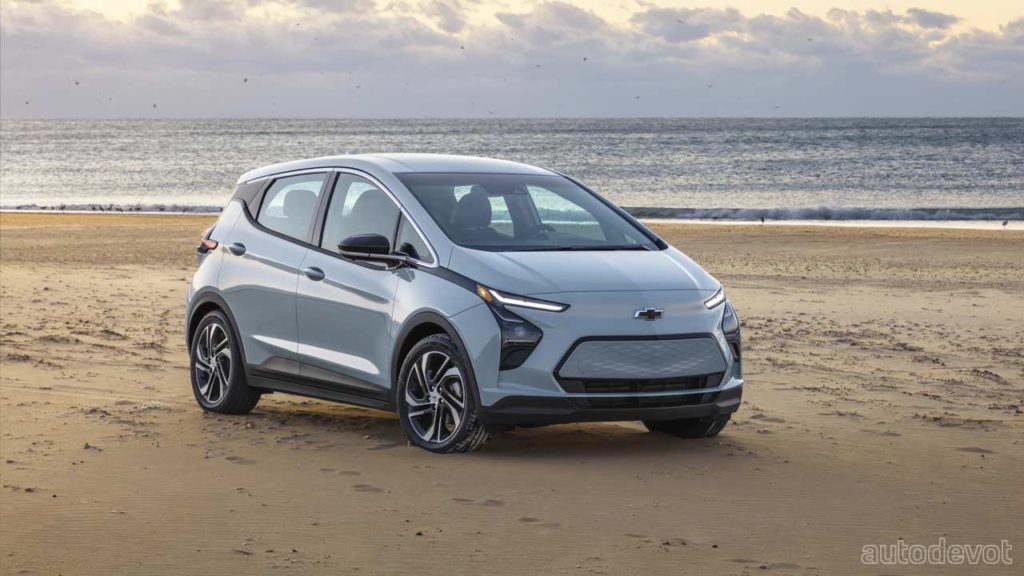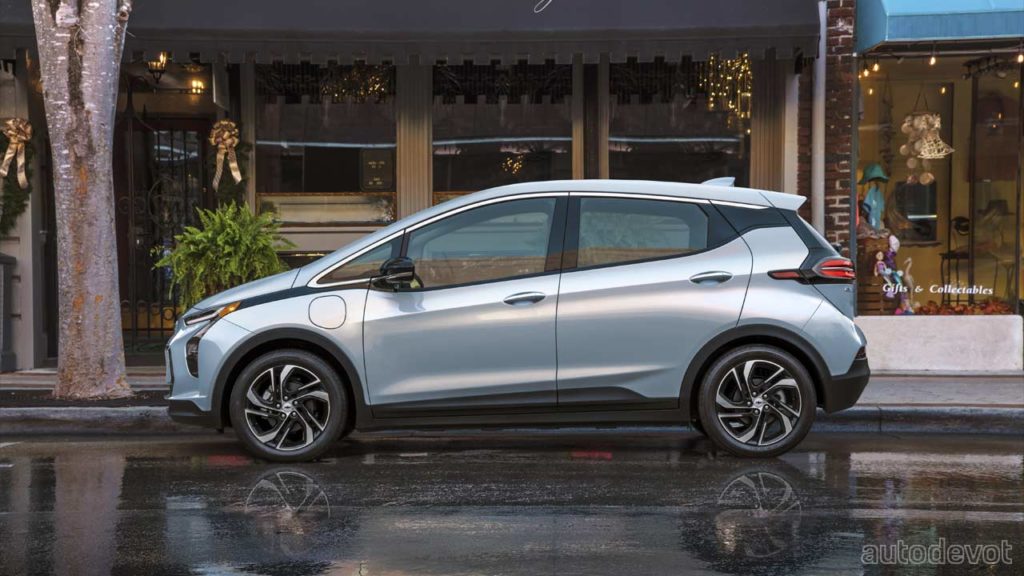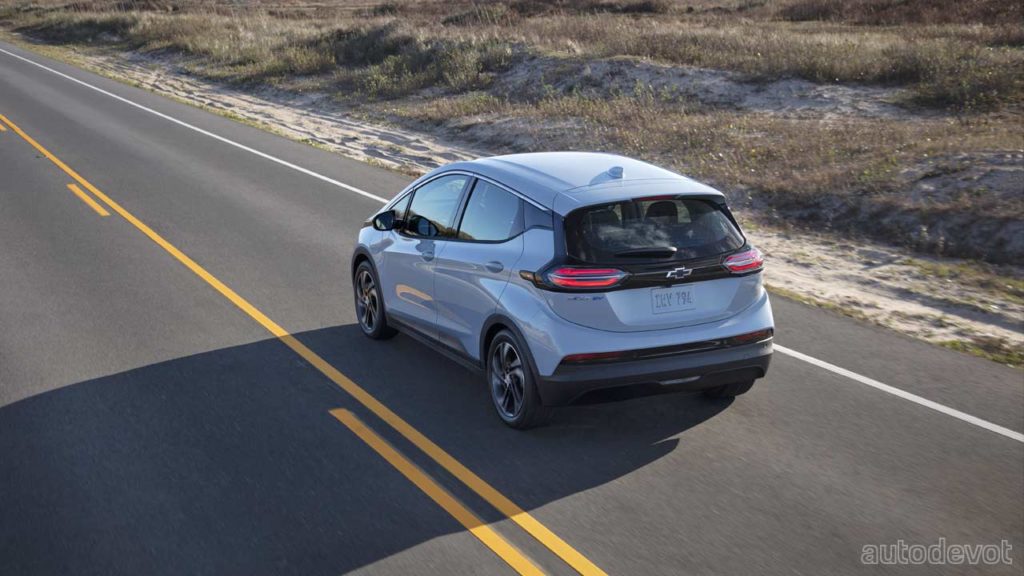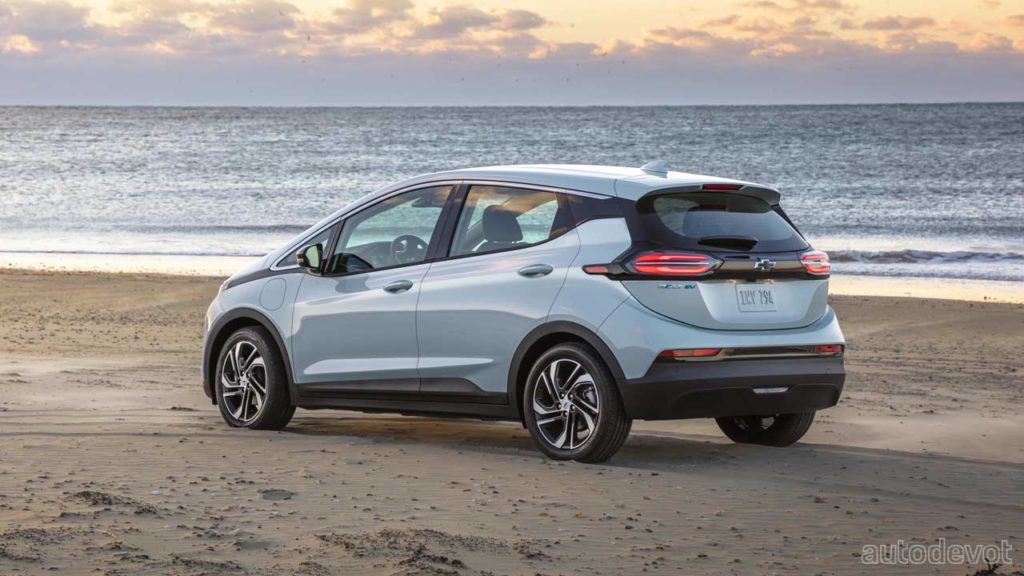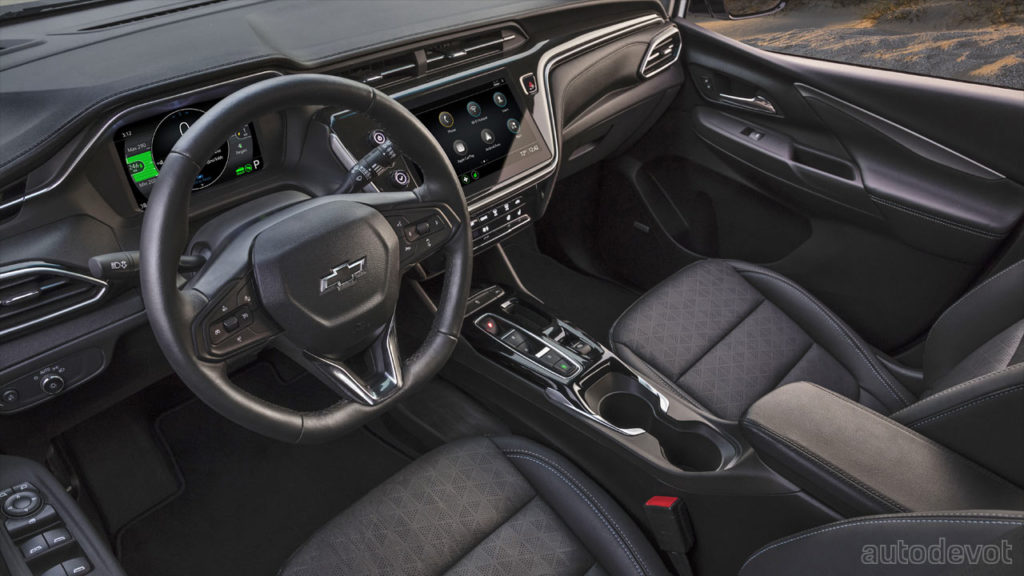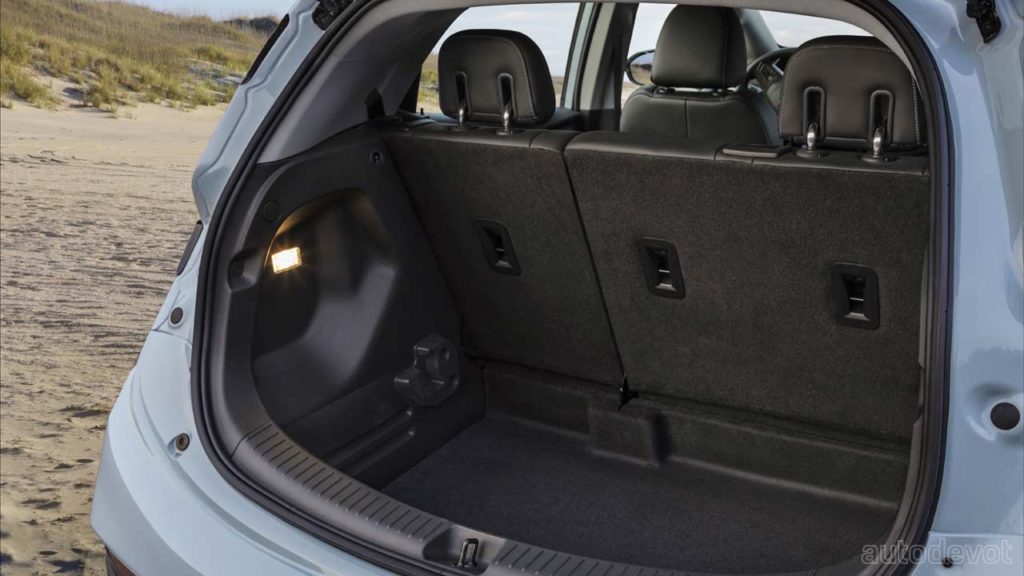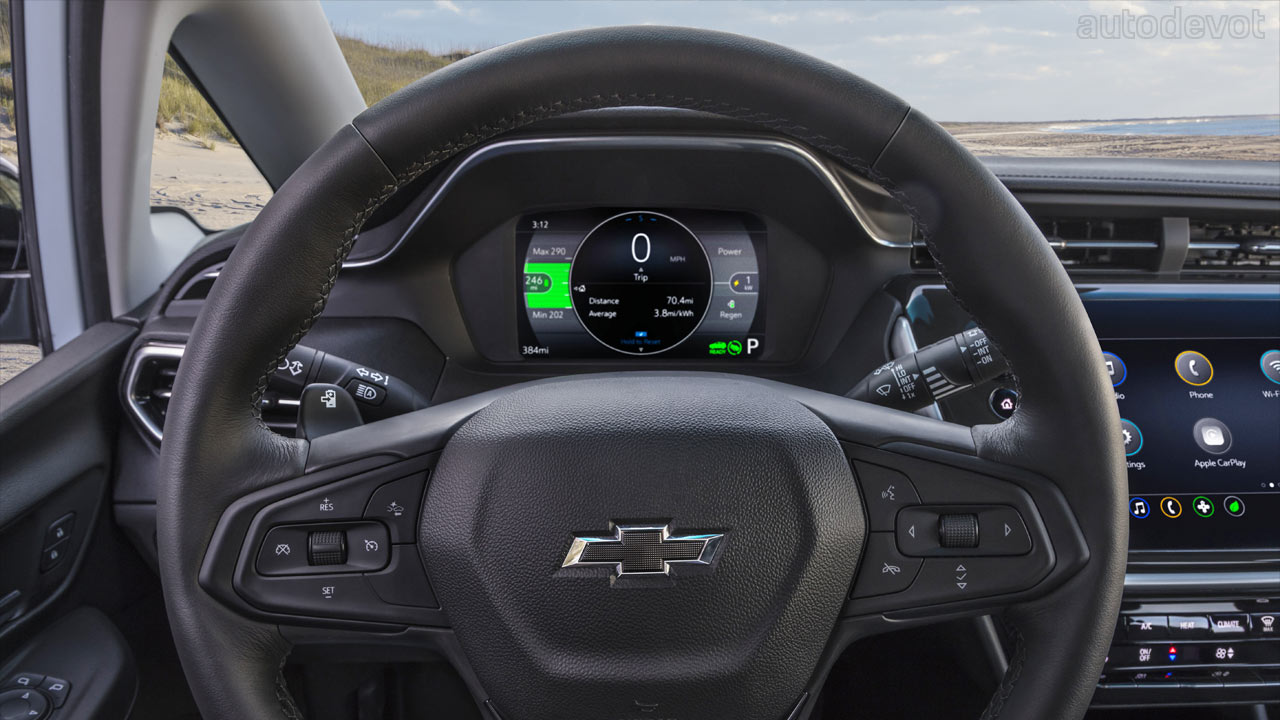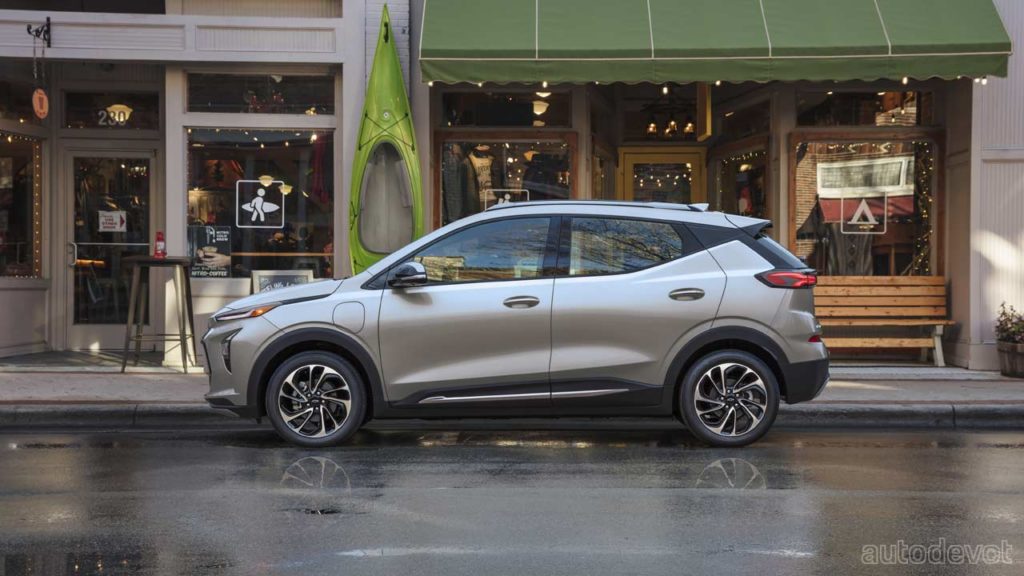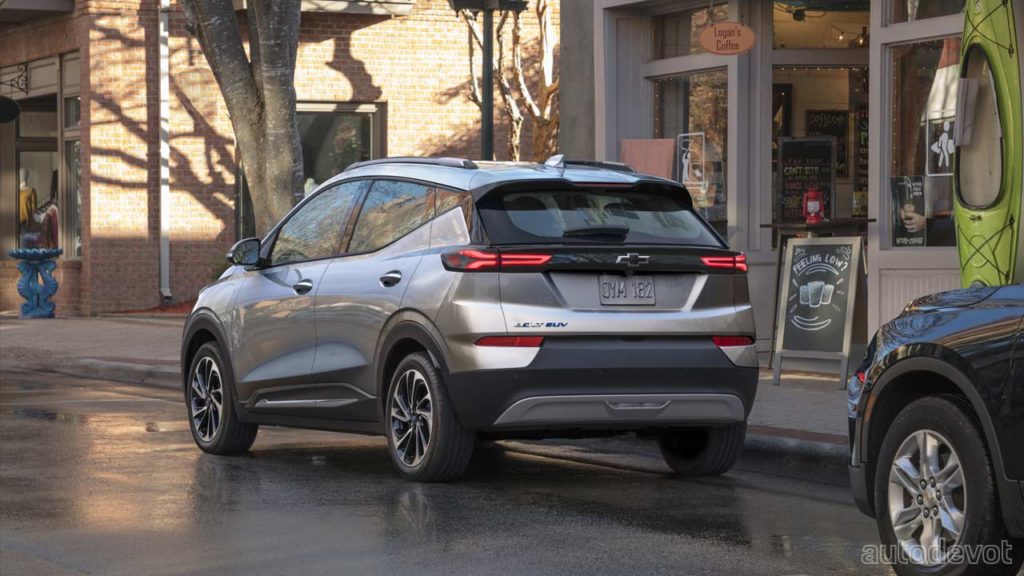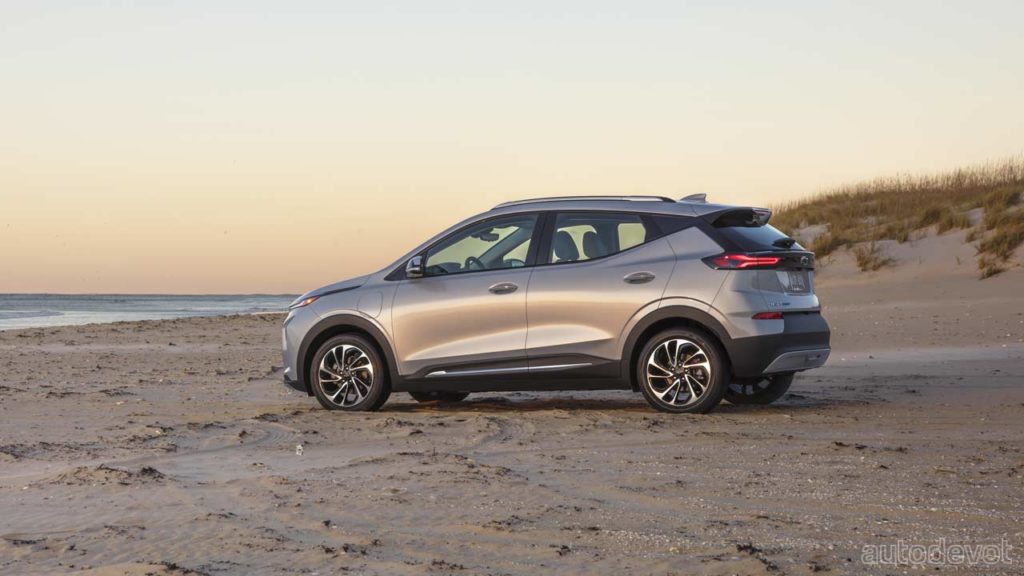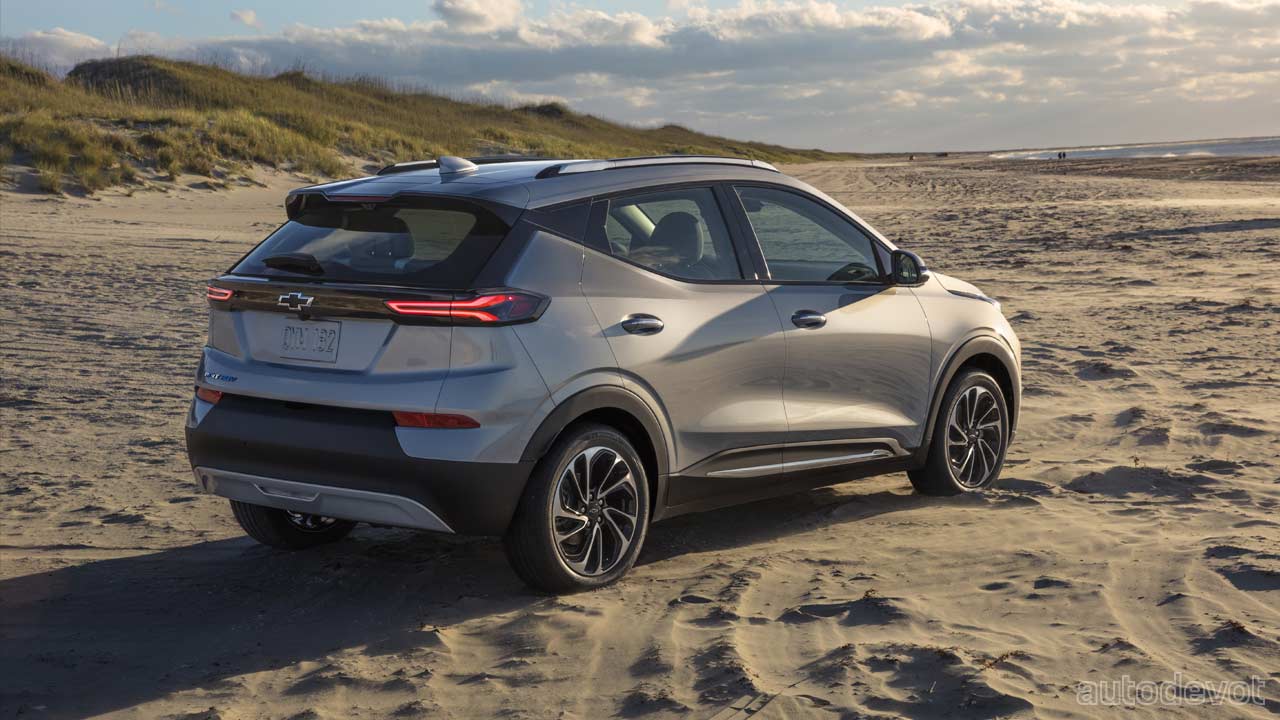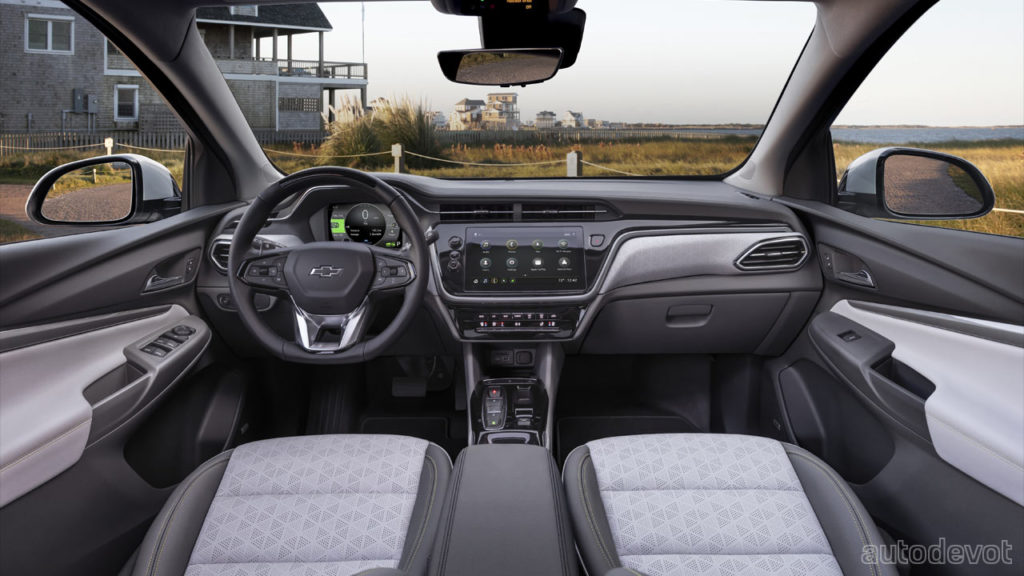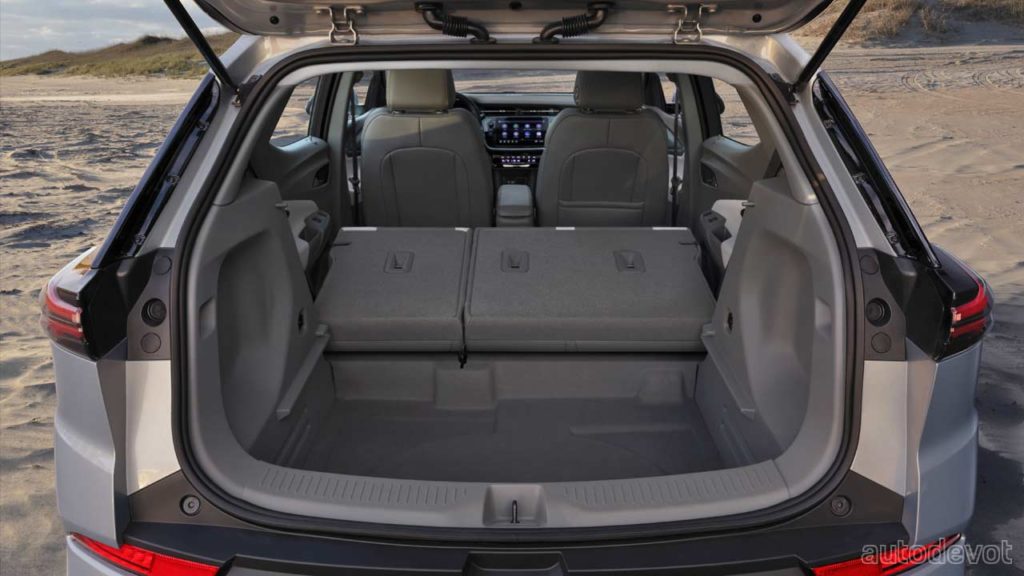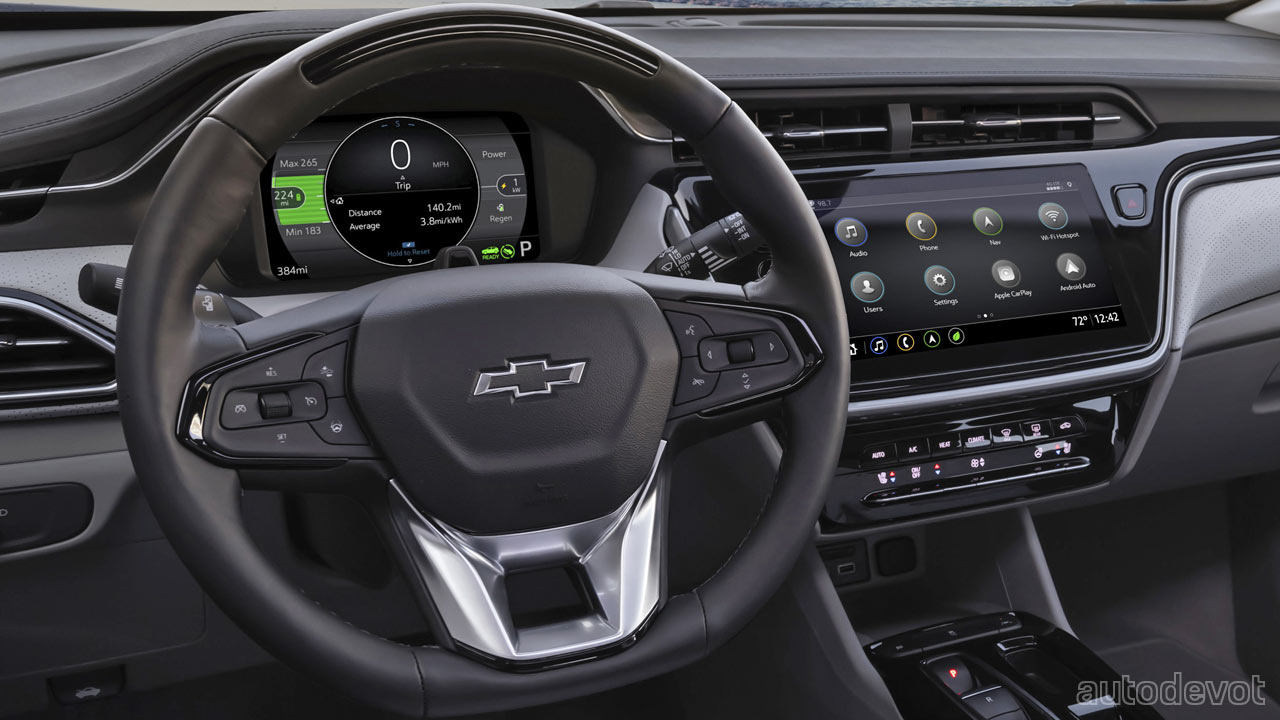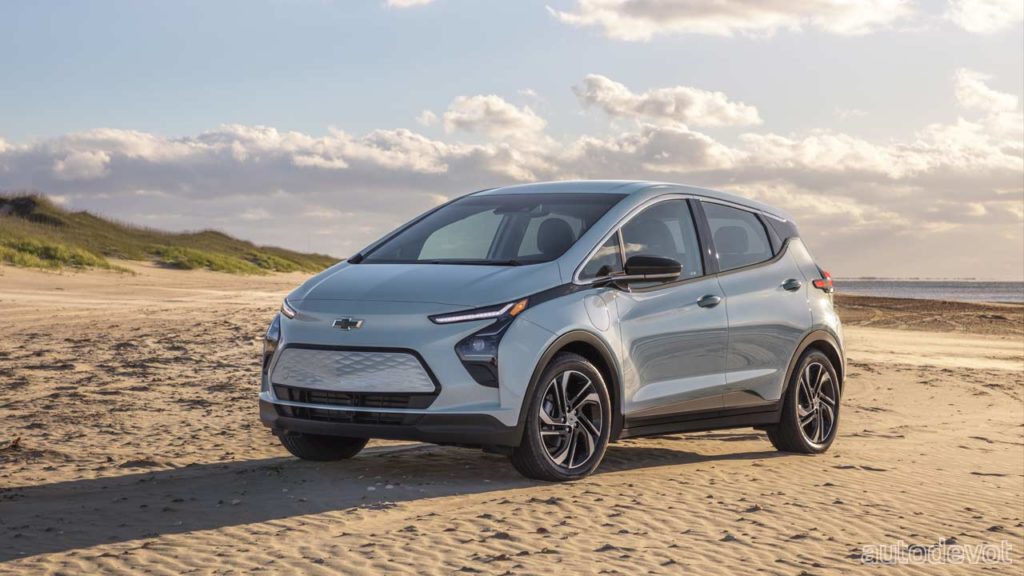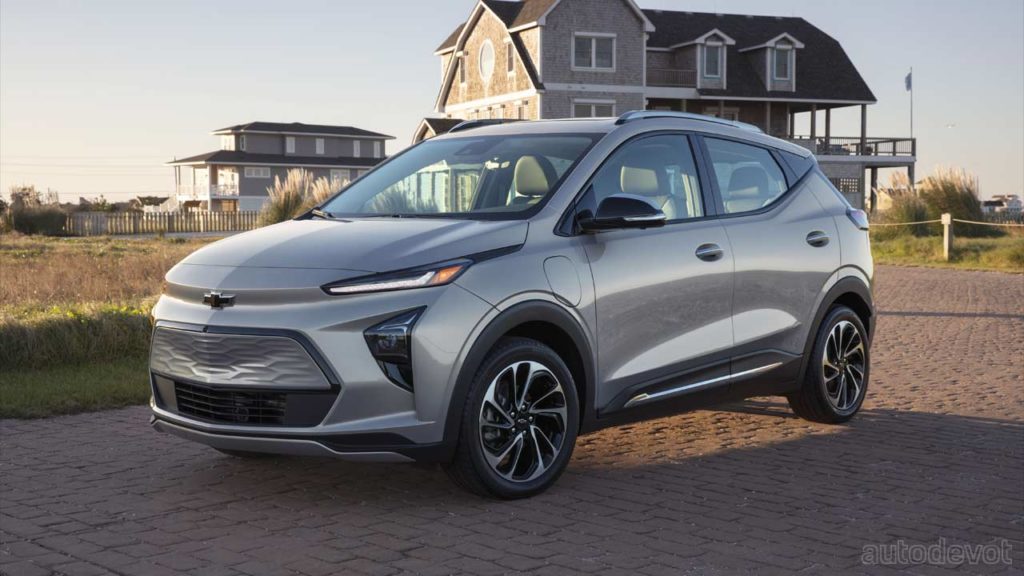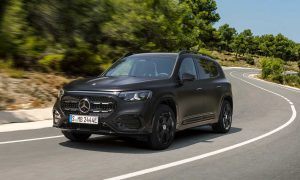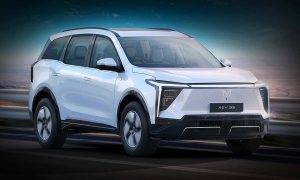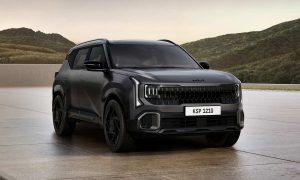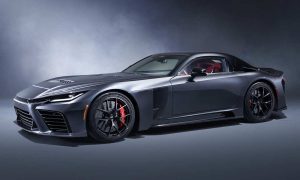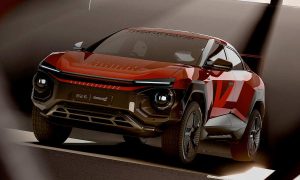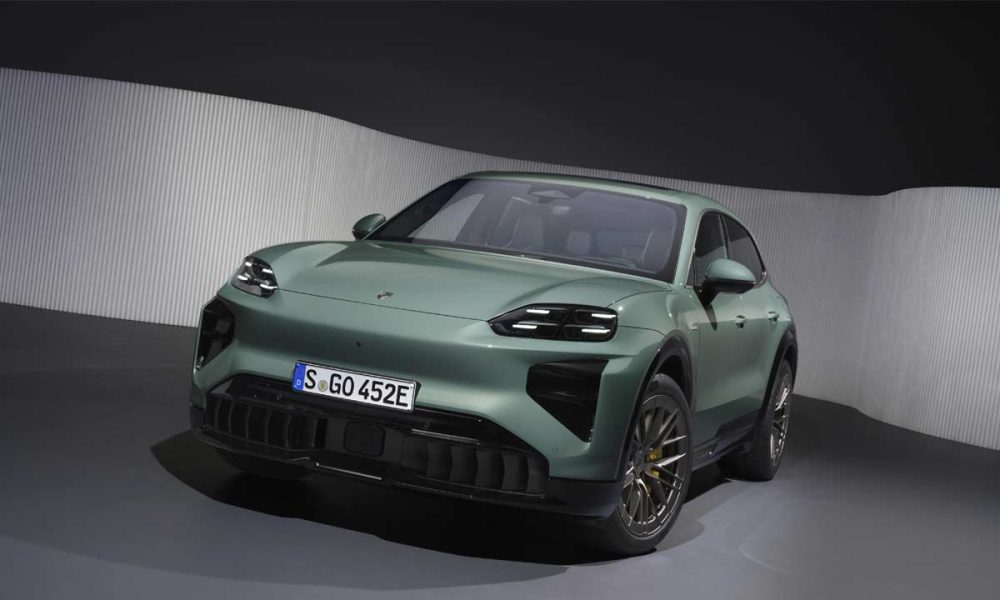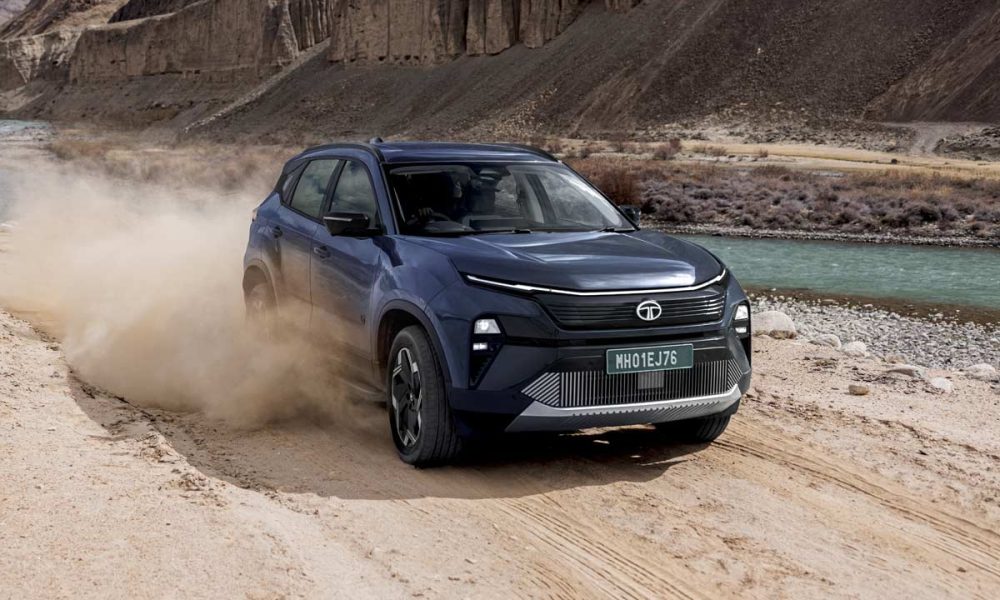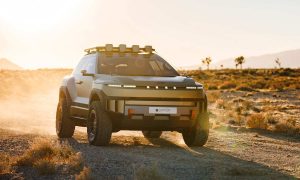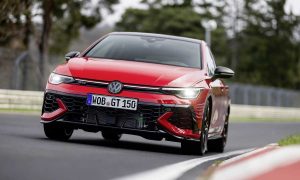Chevrolet has revealed the Bolt EV facelift and for the first time, an SUV/crossover version called Bolt EUV (“Electric Utility Vehicle”). Both are scheduled to go on sale in the U.S. market in summer 2021 as 2022 models.
Let’s start with the Bolt EV then. The designers have gone with the trend for crossovers these days, which is of course the dual-lamp set-up where the top section is a narrow strip of light LED running lights while the main headlights are at the bottom. The overall front fascia has been cleaned up and now there’s only the lower hexagonal grille. The side profile remains mostly unchanged except for a new set of 17-inch aluminum wheels, and at the rear, there are new, contemporary-looking taillights and there’s also a new bumper.
The refreshed cabin features a new steering wheel and a revised dashboard design. Features include an 8-inch digital driver display, 10.2-inch central touchscreen, wireless Apple CarPlay & Android Auto connectivity, and standard Chevy Safety Assist which includes Automatic Emergency Braking, Forward Collision Alert, Lane Keep Assist with Lane Departure Warning, Following Distance Indicator, IntelliBeam and Front Pedestrian Braking. Technologies such as Rear Cross Traffic Alert, HD Surround Vision and Adaptive Cruise Control are optional. HD Rear Vision Camera comes standard.
Will come back to Bolt EV’s technical bits in a bit, but let’s also take a look at the first-ever Bolt EUV. It has a fairly similar design language and from some angles, it rather looks like a hatchback. The wheel design too is similar to those on the Bolt EV. However, the steep angle of the window line tries to compensate for it and so are the roof rails and a chiseled tailgate design with a unique roof spoiler. Chevy claims that no exterior sheet metal parts are shared between the two vehicles. The EUV is 6.3-inches longer.
For those interested to know the full dimensions, the EUV measures 4,306 mm long (+161 mm), 1,770 mm wide (+5 mm) and 1,616 mm tall (+5 mm). It boasts a wheelbase of 2,675 mm, which is 75 mm more compared to the Bolt EV. LED headlights come standard and so are the sequential turn signals.
The cabin too looks similar to the Bolt EV, naturally. The list of features is the same as well, however, the EUV gets a couple of additional features such as wireless smartphone charging, which is optional on the hatchback. Also, the Bolt EUV is the first Chevrolet to come with Super Cruise hands-free driving tech that debuted with the Cadillac CT5.
Moving on to the technical bits then, both the Bolt EV and Bolt EUV are powered by a single electric motor (permanent magnet) at the front that develops 150 kW (204 metric hp) and 360 Nm (265.5 lb-ft) of torque — same figures as the outgoing Bolt EV. The motor draws juice from a 65 kWh lithium-ion battery pack that is claimed to deliver a GM-estimated range of up to 416 km (259 mi) in the Bolt EV and up to 402 km (249 mi) in the Bolt EUV. A 30 minute DC fast-charging is claimed to offer up to 161 km (100 mi) and 153 km (95 mi) ranges, respectively.

Leave a Reply
Note: Comments that are unrelated to the post above get automatically filtered into the trash bin.
